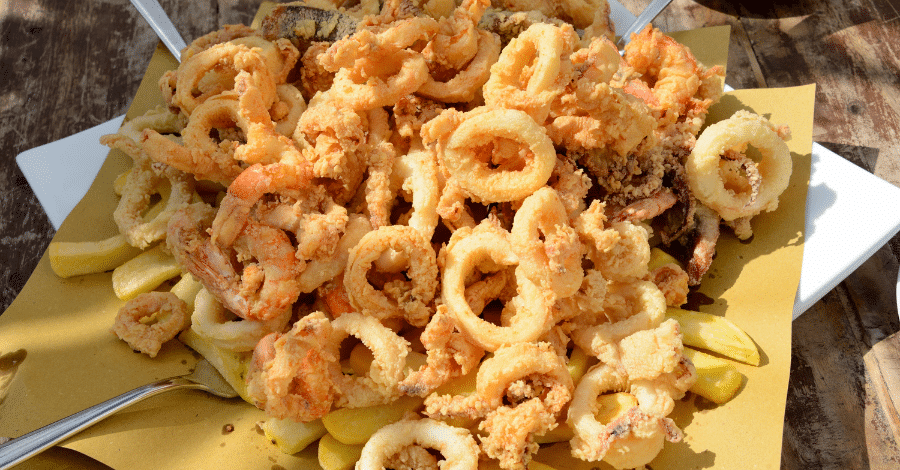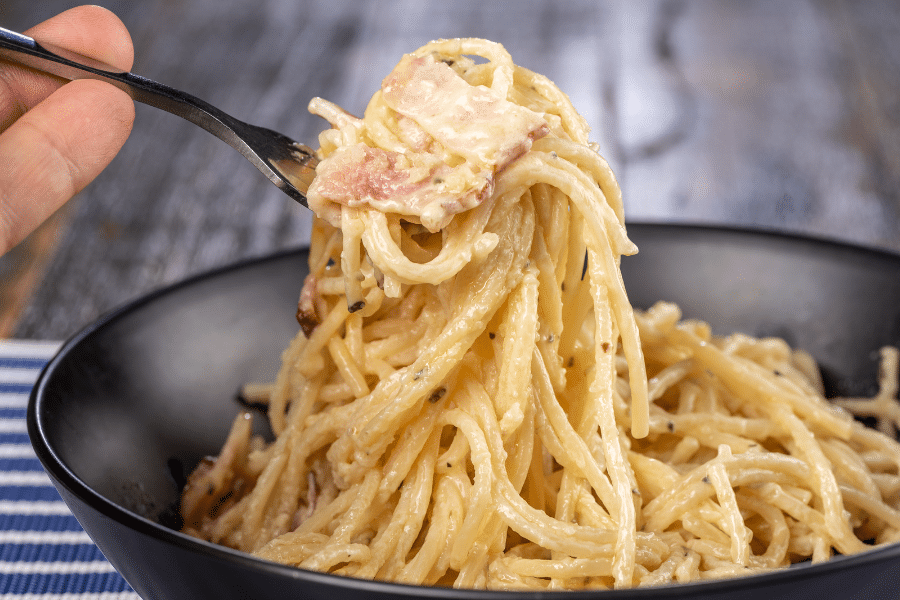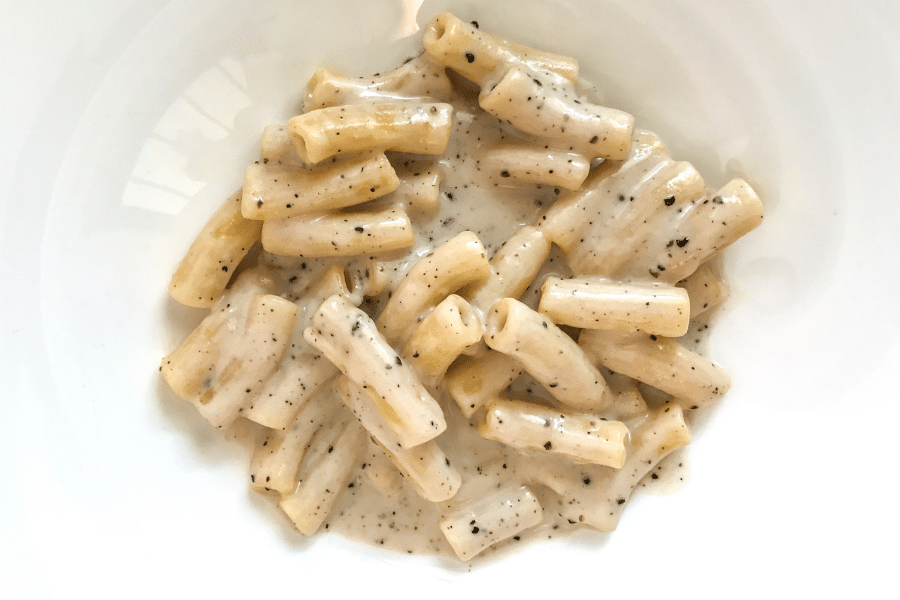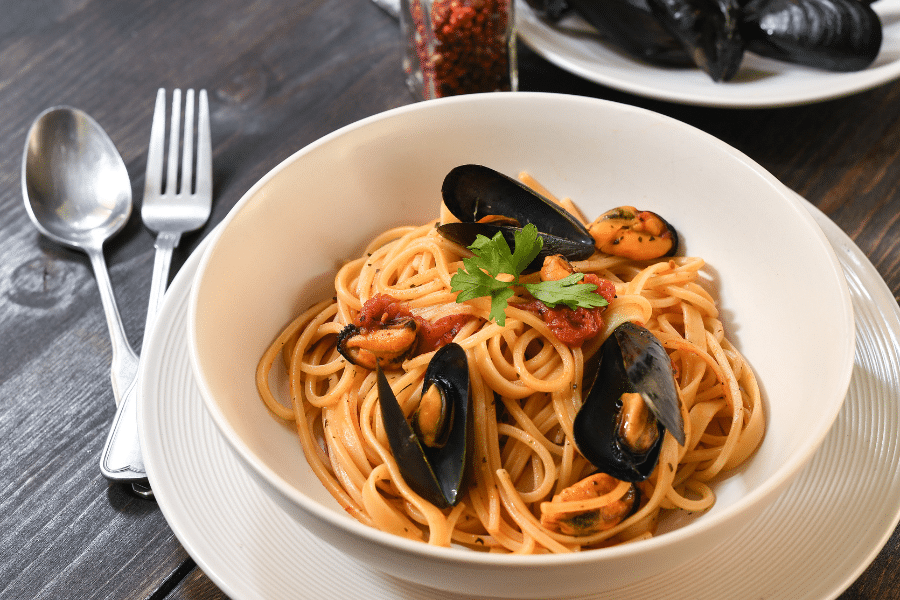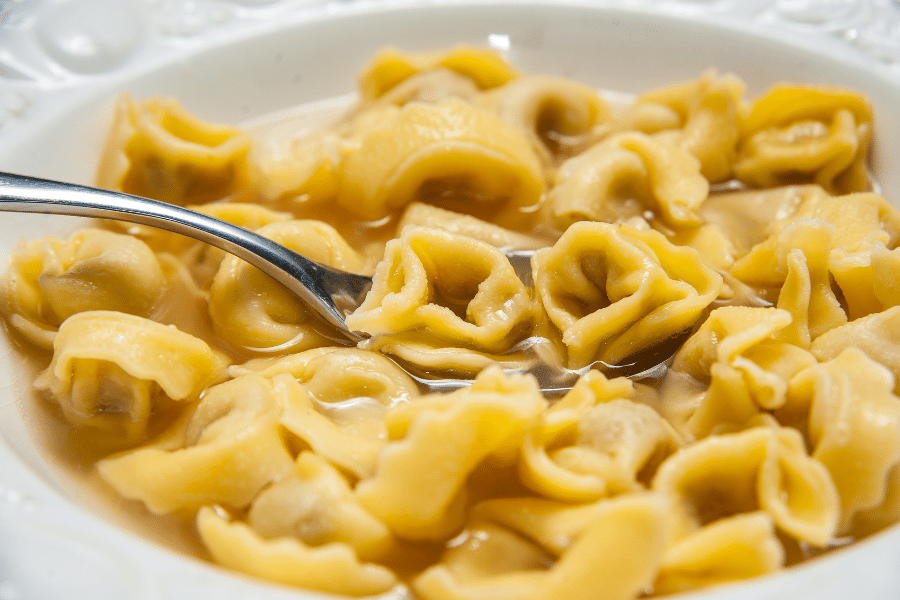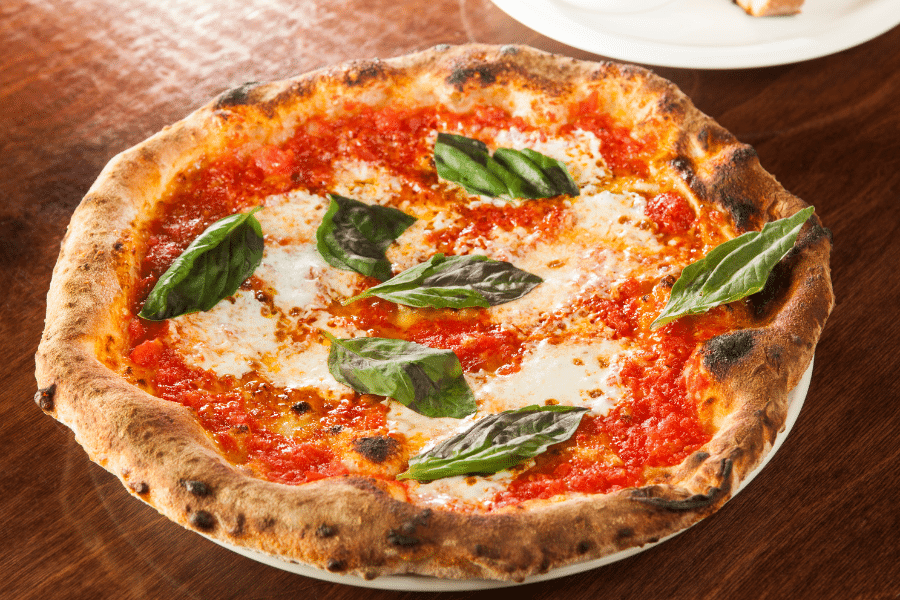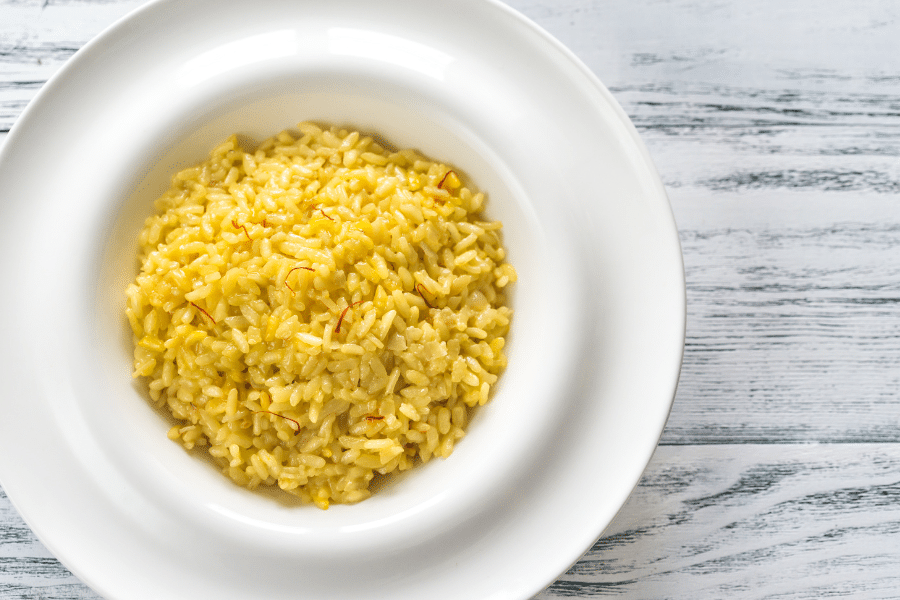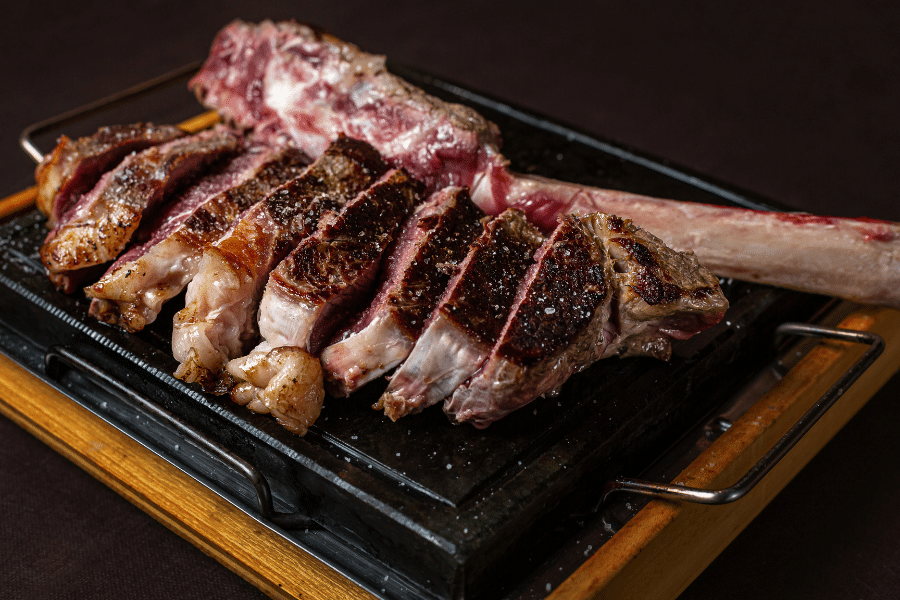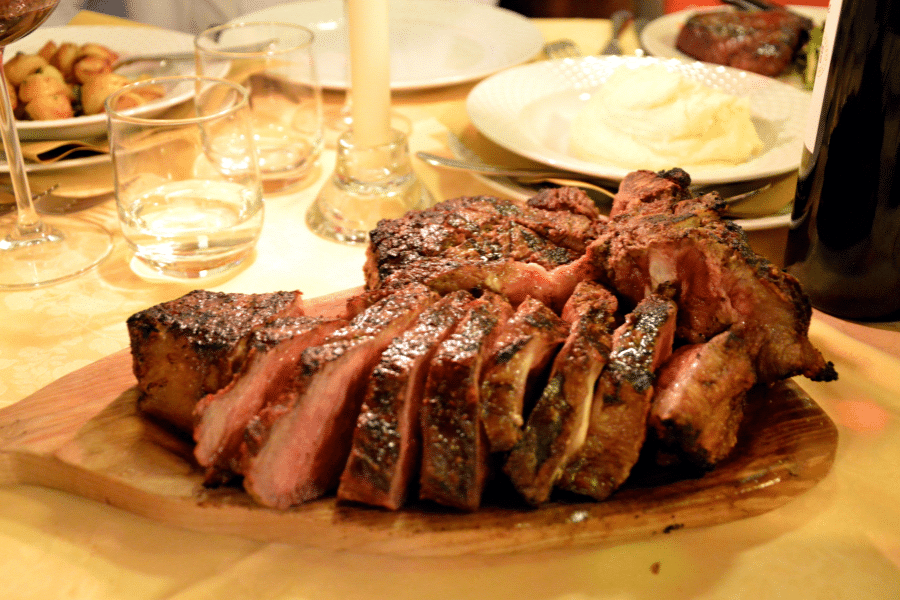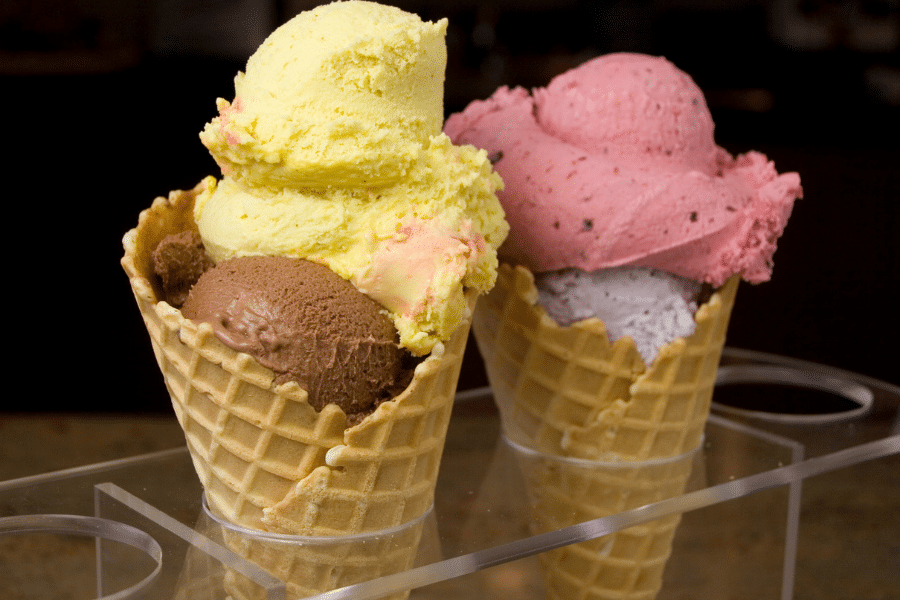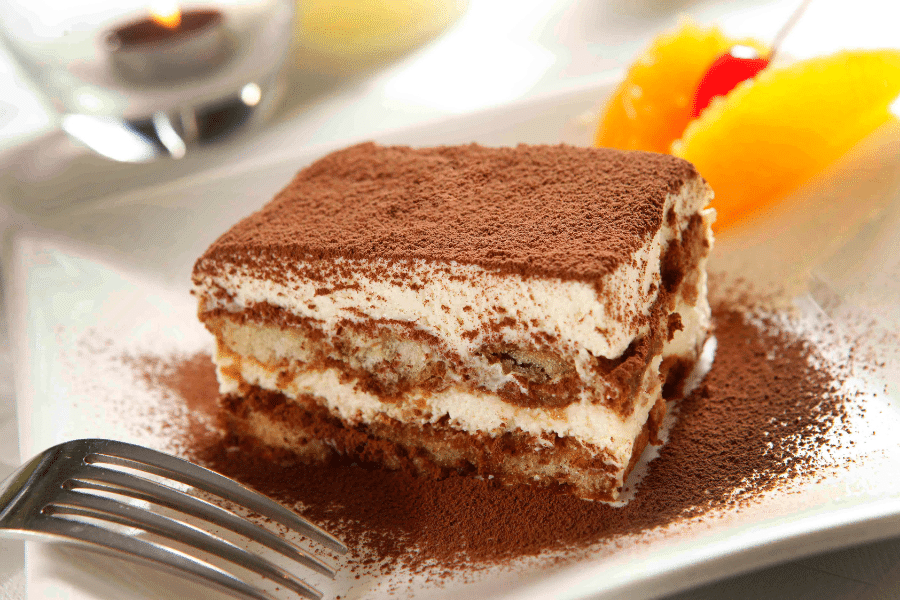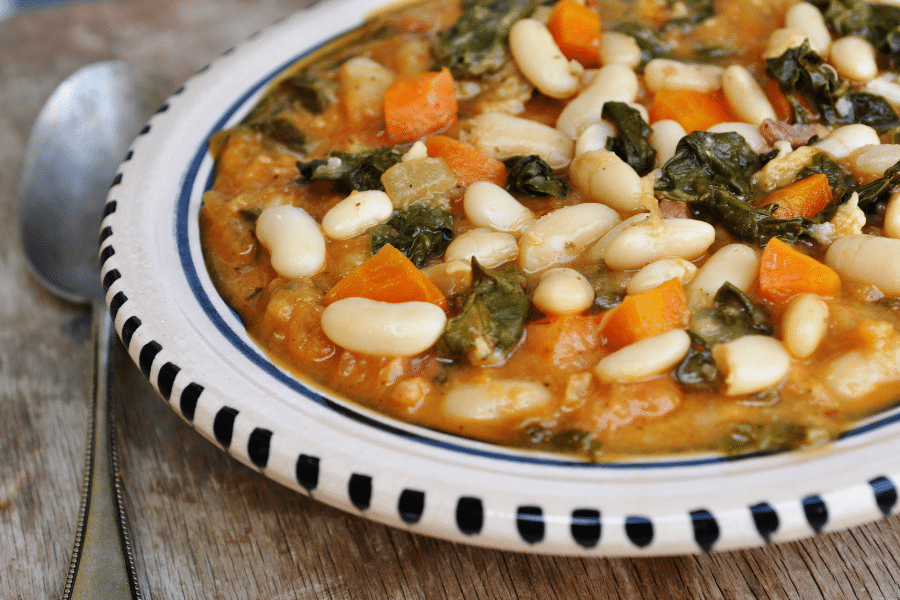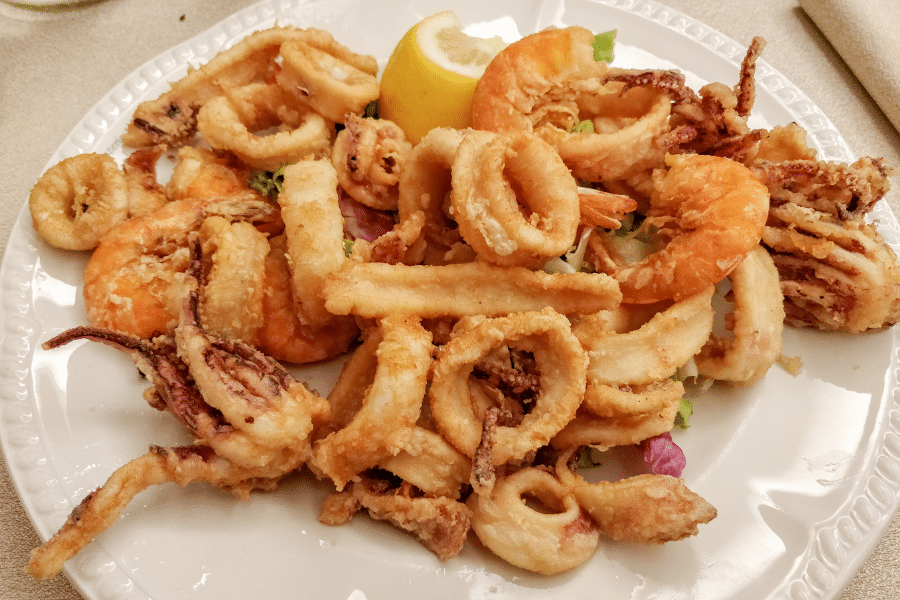When you’re planning a trip or an extended stay in Italy, you should include a serious plan for the food, which plays a big part in the life of Italians. Locals around the country are passionate about their meals, and you’ll often overhear the words mangia and mangiare (to eat) in conversations between Italians, as they are constantly making plans for their next meals.
You should also consider it a great privilege to experience authentic Italian cuisine, its endless variety of seasonal flavors, and regional nuances. Once you get to eat the pizza and pasta served in Italy, you might finally start to understand why Italians don’t get fat in spite of consuming so many carbs on a daily basis.
Food in Italy equals tradition. Italians are opinionated about how their dishes are made, with the majority of trattorias and osterias relying on generations-old recipes passed down from father to son, mother to daughter, and grandmother to grandson.
Food is among the top benefits of living in Italy. We’ll take you through the most famous Italian foods you may have heard of and some you probably haven’t, for a rich culinary experience while in Italy.
1. Pasta
Predictably, we have to start with the most famous Italian food: pasta. The greatness of the pasta served in Italy lies in its simple, homemade, melt-in-your-mouth quality.
After a few months in Italy, you might feel you’ll tire of eating pasta, and you will be wrong. There are such a wide variety of pasta dishes throughout the country, you’ll always have a unique dish to enjoy. We’ll cover just a handful of the best to get you started, and hopefully you’ll discover many other delicious regional recipes on your own.
Pasta Carbonara
Originating from Rome in the 1940s and 50s, this dish was named after Carbonari, or coal miners, to whom many attribute the dish.
Romans like to keep pasta dishes simple, so there are only four ingredients in a traditional Carbonara: guanciale (cured pork jowl), Pecorino romano cheese, black pepper, and fresh eggs. The salty crunchiness of the guanciale, cut into small bits, balances perfectly with the fresh mix of egg and cheese.
Pasta Cacio e Pepe
This is another simple pasta dish whose main ingredients are in the name, cacio, or cheese, and pepe, or pepper. Chefs have mastered this dish by boiling spaghetti or tubular pasta al dente and saving some of the hot, starchy, salty pasta water.
This is mixed back in with the pasta while the pecorino and parmesan cheeses are quickly stirred in, slowly melting into a delicious sauce. Lastly, or sometime in the mixing process, the pepper is added to give the dish a bit more kick.
Seasonal and Local Pastas
There are so many different pasta dishes based on both the time of year and location. From Pasta Frutti di Mare (seafood pasta) anywhere along the coast, Tortellini in Brodo (tortellini pasta in broth) in Bologna, to Cappellacci di Zucca (pumpkin-stuffed Cappellacci pasta) in the Emilia-Romagna region, there are so many unique flavors of pasta you can find in this country.
2. Pizza Napoletana e Romana
Besides pasta, pizza has to be the second most popular Italian food. But the pizza in Italy is very different from American pizza. The dough is light, and the ingredients are often very simple, with two to three “toppings” at the most. You won’t feel overly full after enjoying actual Italian pizza.
There are two types of pizza you’ll find in most Italian restaurants: Napoletana or Romana. Neither is better than the other, it all depends on the thickness of the crust. Napoletana pizza originates in Napoli and it has a thicker, crunchier crust, while Romana, pizza from Rome, is usually very thin and light.
Additionally, there is also pinsa, which Italians will tell you it’s completely different from pizza, but for the most part, it comes with the same toppings as the two listed above. Pinsa dough is quite thick and rectangular, almost like a lighter focaccia.
3. Risotto alla Milanese
It may come as a surprise that rice is one of the most-grown crops in northern Italy and Risotto alla Milanese is a perfect representation of the city of Milan. Its rich flavor, gold color, and aromatic spices might easily be connected to the city’s reputation as Italy’s economic powerhouse and history of trade.
Risotto alla Milanese is a must if you travel or live in the north, a creamy, velvety risotto made with rice from the region, either Arborio or Carnaroli. The dish starts with sauteing diced onions in butter or olive oil, adding in rice to lightly toast, allowing it to soak up the flavors and fat of the onions and butter.
Saffron is what makes this risotto dish unique, an historically expensive spice that gives this dish its luxurious golden color and amazing aroma. When done right, chefs will take saffron threads and steep them in warm broth or white wine. This is then slowly stirred into the rice, giving the dish its creamy texture.
Finally, the dish is garnished with grated parmesan and served, giving you a comforting, deliciously rich dish.
4. Bistecca alla Fiorentina
Bistecca alla Fiorentina is a dish renowned in Tuscany Italy and, surprise, surprise, takes its name from the city of its birth, Florence. Like many Italian dishes, it’s known for its simplicity and flavor.
This dish is typically sourced from Chianina cattle, a breed of cows native to Tuscany famous for their high quality. The steak is a thick-cut and served bone-in, and comes with the tenderloin on one side and strip steak on the other.
Usually, the preparation is quite minimalistic, allowing the natural flavors of the meat to shine. The steak is seasoned with salt, pepper, and a drizzle of olive oil, then cooked over a hot grill or open flame. The result is a seared, crunchy exterior with a tender and juicy interior.
You’ll find the best Steak Fiorentina in Tuscany, more specifically in Florence, but the dish will certainly pop up in trattorias around the country. But bring a friend, because this is a massive cut of meat.
5. Bistecca Tagliata con Funghi Tartufo
It would be a crime for tartufo, or truffles, not to make a list of the most famous Italian food. The unique mushroom is found all over Italian forests, and is often incorporated in some rich, amazing pasta dishes.
But some of the most delicious pairings you’ll find Italians create is truffles and red meat, in particular steak. The steak is grilled or seared to perfection, achieving a mouthwatering crust on the outside while retaining its tender qualities inside. The cooking method creates a delicious contrast between the caramelized, slightly crunchy exterior and the juicy interior.
Once the steak is cooked to the desired temperature, it is rested and then sliced (literal translation of tagliata) into thin strips. The steak is then topped with a generous serving of truffle mushrooms, known for their earthy and distinctive flavor. Before topping, the truffle mushrooms are typically sautéed with butter or olive oil, garlic, and sometimes a splash of white wine or truffle oil to further enhance the aroma and flavor.
This dish has a delicate balance, combining the richness of a perfectly cooked steak with the earthy and aromatic allure of truffle mushrooms. Its textures, flavors, and elegant presentation makes Bistecca Tagliata con Funghi Tartufo a standout Italian dish wherever it is served.
6. Gelato
There aren’t many people who are moving or visiting Italy who haven’t heard of gelato, but we’ll do our best to pitch it to you nonetheless. Gelato is often called “Italian ice cream” despite the distinct differences between the two desserts. Both share similar ingredients like cream, milk, eggs, and sugar, along with any flavors they want to add, the process is quite different.
Gelato has a much lower fat content because it uses mostly milk rather than cream, and the mixing process is much slower. Because of these two elements, gelato has much less air incorporated. This means the end result is much more dense, allowing a more concentrated flavor profile.
If you’re wandering the streets of an Italian city looking for gelato, find the Gelateria that serves theirs in metal trays with smooth, flattened tops. This usually indicates the gelato is made in-house daily. If you notice the ice cream is stacked, puffy and doesn’t melt (you’ll see this in touristy areas), that could mean the gelato overly relies on preservatives, signifying that it is not freshly made or it is not gelato at all.
7. Tiramisu
Translated to “pick me up” or “cheer me up” in Italian, tiramisu is one of the lightest, most refreshing desserts on the menu. This dessert is a beautiful combination of ladyfingers soaked in espresso stacked between layers of a smooth and creamy mixture of mascarpone cheese, eggs, and sugar with a splash of Marsala wine or brandy.
On top, the pastry chef dusts either cocoa powder or grated chocolate. Each spoonful of tiramisu offers a delightful combination of textures and tastes, a harmonious blend of the flavors of coffee, creamy mascarpone, sweetness, and a hint of bitterness.
8. Ribollita
Like so many of the best dishes (including some on this list), Ribollita was invented by peasants that were looking to stretch their food as far as possible. Translated as “reboiled,” peasants would collect leftover bread which was soaked in meat, add it to a broth seasoned with salt and pepper, and boiled with cabbage and cannellini beans. After, it would be topped up with whatever leftovers they had, making it last as long as they possibly could.
Ribollita is typically served hot and garnished with a drizzle of extra-virgin olive oil, grated Parmesan cheese, and a sprinkle of freshly ground black pepper. The soup is often enjoyed as a complete meal on its own, thanks to its hearty nature and the inclusion of beans and bread.
This beloved Tuscan dish embodies the rustic and resourceful spirit of Italian cooking. Its combination of wholesome vegetables, beans, bread, and aromatic flavors makes Ribollita a satisfying and nourishing soup that brings warmth and comfort to the table.
9. Fritto Misto
Another simple dish, fritto misto, or “fried mix,” is a snack you’ll find in every region of Italy, providing a sample of local food. Inland, you’ll find everything from vegetables, meat, cookies, olives, cheese, and more, while along the Italian coast (which is thousands of miles long), you’ll be able to sample the abundant variety of seafood like calamari, shrimp, squid, clams, mussels and tiny fish.
Whatever ingredients are chosen for your fried mix, they are usually coated in a light batter which combines flour, eggs, and sometimes beer or sparkling water that creates a crispy texture. Then, the ingredients are lightly fried to a golden color, keeping the ingredients tender and succulent.
Fritto misto is a refreshing snack that can get you through a long travel day or that you can enjoy as an appetizer before your main dish.
Whether you’re a picky eater or have food intolerances, you’ll be able to find a dish in Italy to suit your needs. From pasta, pizza, and gelato to rich red meat, hearty soups, and fried regional specialties, you won’t tire of Italian dishes.
Though we’ve given you nine of the most famous Italian dishes, there are so many more culinary delights to discover in each region of the country, so be sure to ask the locals what food they are famous for.
Hungry for more? Check out other famous dishes from Portugal, Spain, Croatia, France and Greece.

